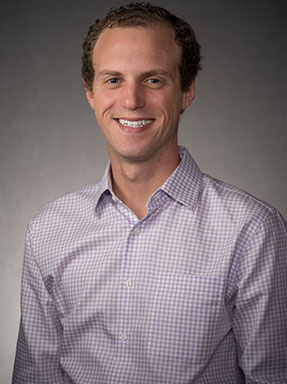Students Personalize History Through Veterans Legacy Program
Learning More About Local Veterans and Their Families

The story of Colorado’s military sacrifice is largely written on two-foot slabs of ghostly, milky marble, standing at attention in southwest Denver. Fort Logan National Cemetery is as good as a history book: a 214-acre volume stretching back to 1889, with chapters on World War I, Korea, Vietnam and everything in between. More than 130,000 American veterans and their families are buried here.
Monica Kleyman walks between the grave markers on an August afternoon. She knows plenty about war. As a rising junior and history major at the University of Denver, she has studied it. But until this summer, she had never quite understood it as she does now.
“It’s a lot different learning about wars than it is learning about personal history of someone who has actually been in a war,” says Kleyman, whose father was a Soviet soldier and whose uncle served in Kuwait. “These people seemed ordinary,” she adds, “but they have extraordinary stories.”
For the last two years, the U.S. Department of Veterans Affairs has been approaching universities and asking their students to help tell these stories through extracurricular research. On Memorial Day 2016, the National Cemetery Administration established the Veterans Legacy Program,encouraging academics to learn more about their local veterans and their families.
This year, the department approached DU history professors Elizabeth Escobedo and Carol Helstosky. With backing from the University of Denver’s Undergraduate Research Center, the faculty members recruited 15 cross-disciplinary students with varied backgrounds and beliefs. Together, they began to collaborate. That alone is impressive, Helstosky says, considering the political nature of armed combat and the increasingly divisive rhetoric in American society.
“They’re all over the map,” she says of her students, “but they’re all deeply engaged in the research process. And I think they want to make a point: All these people who volunteer for service … deserve someone’s attention to hear their life story and see what it represents.”
Split into small teams, each group focused on a specific population (for example: foreign-born citizens, DU alumni, women, relatives who served together) and began to pore over an 11,000-name spreadsheet in search of a compelling story.
“History has always been really important to me,” says Matthew Greenlee, a rising junior who studied the role of Japanese- and German-Americans serving in World War II. Many of the names Greenlee came across belonged to members of the 442nd Infantry Regiment, which, he discovered, is the most decorated in history, composed almost entirely of Japanese-Americans despite the U.S. government’s internment of their friends and relatives. “For me to be able to share these stories that I knew nothing about with people who might not [otherwise] care less about history, it’s incredible,” he says.
Delving deeper than the words on a headstone has required extensive research and creativity, says professor Elizabeth Escobedo. Since a firsthand account from their subjects is impossible, students have been forced to dig through databases in search of leads. Determination yielded interviews with family members and friends who could provide context.
“It’s been really great to watch students as they recognize that veterans and their stories are all around us,” she says. “You just have to very lightly scratch that surface and you’ll see just how connected our communities are to veterans’ lives and their contributions. And to see those light bulbs go on with students as they … really get a sense of who this individual was, I think that’s been perhaps the most rewarding part of this journey for me.”
Research, however, is only a portion of the project. This fall, the students in DU’s Veterans Legacy Program will become teachers too. The DU cohort will bring its findings to students at Arapahoe High School, enriching their biography and U.S. history courses.
“I’m excited for that part,” says Camryn Dreyer, a DU senior, “because I’m passionate about history. And I feel like it will be great to sit in a classroom with high school students and impart that passion.”
The project culminates with an exhibit opening at the Anderson Academic Commons later in the fall quarter. Through the details that make each veteran's story unique and the artifacts, like medals and photos, they left behind, students will bring the men and women they researched, in a way, back to life. Veterans, their families, their friends and the larger DU and Denver communities will be invited. The ultimate goal is to digitize the exhibit, so that it may live on indefinitely.
“I think one of the important messages that student [researchers] are coming away with is that everyday people make a difference,” professor Escobedo says. “It may not be individuals who end up being a famous politician or a world leader, but these are individuals who served their country and made a difference on the battlefield and made a difference in their communities.”
“The thing I can’t get over is how humanizing it is,” adds Greenlee, noting the contrast between the Veterans Legacy Program and reading a textbook. “It got to a point [in history class] where I didn’t think of the people I was learning about as people. They didn’t really come to me as real until I went and stood by people’s gravestones. That was a really impactful moment for me.”
Back at Fort Logan Cemetery, Kleyman is kneeling by the grave of Sgt. First Class Stephen Cribben, a Green Beret who was killed in action in Afghanistan last year. She pierces the grass in front of his marker with an American flag and bright flowers, injecting a splash of color into the sea of 130,000 monochromatic grave markers. It is symbolic of what Kleyman has spent the last several months doing: establishing the individuality of each soldier she has studied, ensuring they are recognized as more than just another payment to cover the cost of freedom.










